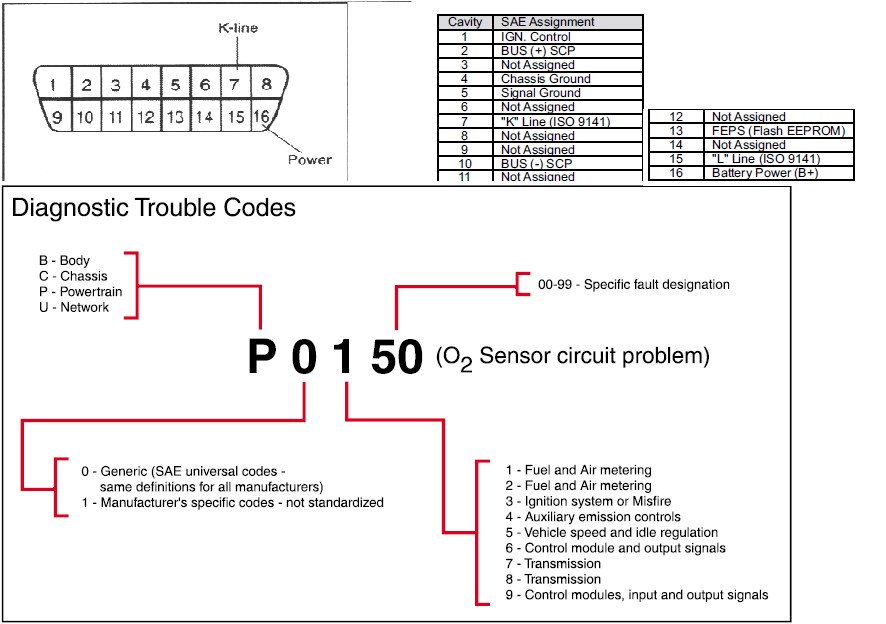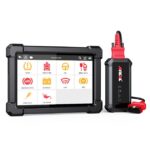For anyone working on vehicle diagnostics, locating the OBD2 port is the first crucial step. If you’re dealing with a 2001 Kia Rio, you’ll be pleased to know it’s equipped with a standardized OBD2 port, making diagnostic checks straightforward. This port is your gateway to understanding your car’s health, accessing engine and transmission data, and potentially more.
The 2001 Kia Rio Obd2 Port location adheres to the SAE J1962 standard. This means you can expect to find it inside the passenger compartment. Specifically, it’s situated on the driver’s side, beneath the dashboard and under the knee pad. This standardized location is designed for easy access, allowing you to connect a scan tool quickly and begin your diagnostic process.
 OBDII Connector Pinout Diagram for Vehicle Diagnostics
OBDII Connector Pinout Diagram for Vehicle Diagnostics
This sixteen-pin connector not only provides a standardized physical interface but also delivers power to your scan tool directly through pin 16. For your 2001 Kia Rio, accessing the Engine Control Unit (ECU) and Transmission Control Unit (TCU) data is readily available through this port. Using a generic scan tool, you can retrieve valuable information to diagnose issues, read fault codes, and monitor live data streams from your vehicle’s systems.
While some older Kia models or more advanced systems might utilize a Kia-specific 20-pin diagnostic connector located in the engine compartment for systems like ABS or SRS, for basic engine and transmission diagnostics on your 2001 Kia Rio, the OBD2 port under the dash is your primary connection point.
It’s also important to note that the 2001 Kia Rio OBD2 port communicates using standardized OBD2 protocols. For many Kias of this era, including likely the Rio, the ISO 9141-2 CARB protocol is used for data transfer. This ensures compatibility with a wide array of generic OBD2 scan tools available on the market.
In conclusion, diagnosing your 2001 Kia Rio is made accessible thanks to its standard OBD2 port, conveniently located under the driver’s side dashboard. This port allows you to tap into essential vehicle data using readily available scan tools, making troubleshooting and maintenance more efficient.
